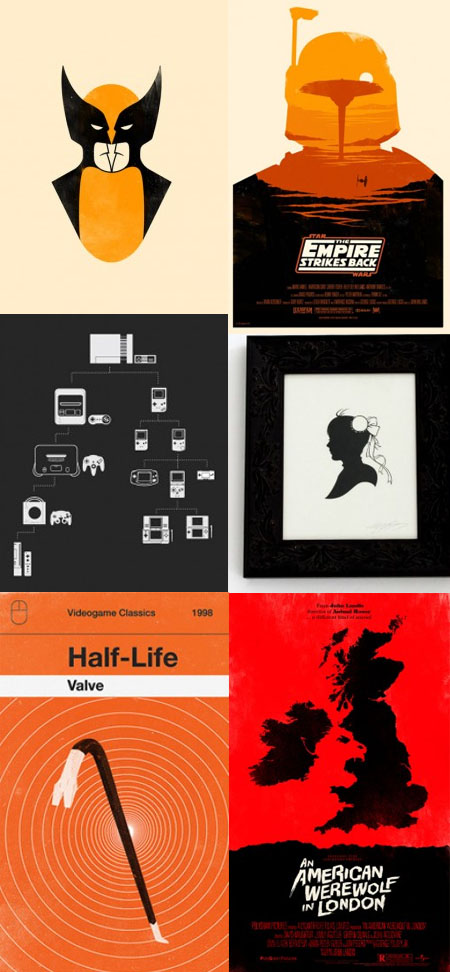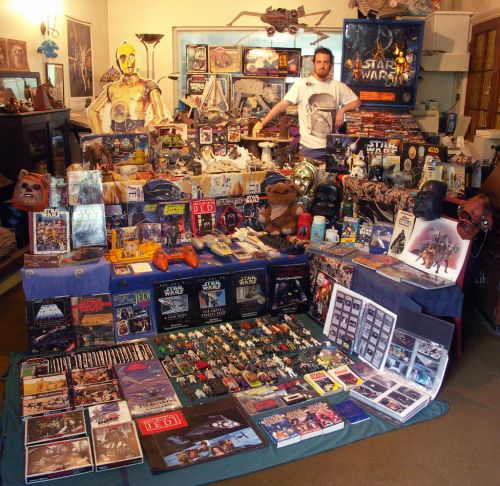Pictures – Olly Moss
Sometimes, as you browse the internets, you get a lovely moment in which you realise the person that made this cool thing you are looking at is the same person that made that other cool thing you remember from a while ago. You check out the rest of their work, and if you haven’t already, probably think about whether it’s worth following their output more closely.
I recently had that, except it turns out that Olly Moss is behind at least six different things (or sets of things) I had admired in the past:
Clearly, they share a certain graphical elegance and pop-culture-ouvre, and in the end the coincidence isn’t that huge, because he’s most likely closely followed by one of the aggregators of content that I browse, although I do recall seeing at least three from reasonably independent sources, so I remain quite amazed.
In short, do go have a browse of his projects. There’s lots more great stuff there.
Link – The Benjamin Franklin Effect
Summed up nicely at the start:
The Misconception: You do nice things for the people you like and bad things to the people you hate.
The Truth: You grow to like people for whom you do nice things and hate people you harm.
It’s not a totally airtight case, but the article weaves anecdote with data nicely, the results are certainly very suggestive, and I recommend that you read the whole thing.
Quote – A Difficult Person
What I would like to do now is present you with a quote which, out of context, is rather dry and uninteresting, which would be a rather pointless thing to do, so instead I will first attempt to provide you with that context, in the hope that the quote will then seem to you just as striking and memorable as I found it to be. So bear with me here.
In Face of the Crime, or in the original German, Im Angesicht des Verbrechens, arguably better translated as “Face to Face with Crime” or perhaps “All up in the face of crime”, was described by a friend-of-a-friend as a kind of Berlin-based version of The Wire, and unfortunately it isn’t, as the characters are much less engaging, and the realism level far lower, even when one ignores the strange touches of what I guess people would call magical realism. That’s not to say that it’s bad, I actually found it rather interesting in its own strange way, it’s just a matter of setting one’s expectations accordingly.
If you think that sounds promising, and if you are the kind of person that avoids any spoiler for something you might later watch, no matter how small the detail or slim the chances of you watching it, then you may or may not choose to watch the trailer below (which is in German without subtitles and is somewhat NSFW) to further firm up your opinion, and based on that you may prefer to skip straight past this section to the puzzle bit below; but just so you know, as spoilers go, where 1 is inconsequential and 10 is The Sixth Sense, I’d put this at a 3.
http://www.youtube.com/watch?v=4fcGaKWyrIY
So, we have someone I’ll describe as our hero, a straight-laced fellow who rarely betrays emotion, and is just trying to do the right thing, which is tough when you’re a cop in a crime drama with some back-story and Damoclean family tension hanging over you. One gets the impression that you’re supposed to root for him, on account of his moral rectitude, but it’s a little hard to do so, since he mostly does what is expected of him, and just occasionally does something else, but without getting remotely emotional about it.
Meanwhile, there is the heroine, who has a powerful vision of the hero’s face while swimming in a lake (and we know it’s a powerful vision because it gets repeated in the recap at the start of almost every episode), and whom it is strongly implied is destined to meet and presumably fall in love with said hero. She’s got a lot of common sense and a goodly amount of agency, but occasionally must put those things to one side in order to allow the plot to proceed, presumably because she realises that one way or another this will ineluctably lead to her destiny with the hero.
I don’t consider it much of a spoiler to say that they eventually meet, and we know and they know that something magical and destiny-related is happening, even though they’ve barely spoken to one another at this point, and despite the fact that the heroine seems to be all about hope and destiny while the hero is clearly married to his job and gives the impression that truly loving somebody would probably be beyond his emotional register.
I no longer remember the exact details, but there comes a slightly awkward conversational moment, and the heroine’s eyes flicker just slightly, and you can see that while she knows this is her chap-of-destiny, it might actually be that he’s not the best potential partner one could possibly imagine, and she suddenly says, quite bluntly (according to the subtitles):
Could it be that you are a difficult person?
Answer – Climb and Descent
Last week I asked if there was a single time on both the day of ascent and day of descent at which Joss Whedon could be found at the same altitude, given that he began both journeys at midday and ended them at midnight. A nice way to see that the answer is clearly yes is to imagine both journeys happening simultaneously, in which case there must clearly be a time at which the ascending Joss Whedon crosses paths with the descending one.
Perhaps more convincingly, you can draw the answer, as Richard describes:
Trivially proven by drawing two overlaid graphs of altitude vs time. One line goes top-left to bottom-right, the other bottom-left to top-right. Short of teleporter accidents, the lines have to cross at some point. Read off the time and altitude to find where/when.
That was Level 1. Here comes Level 2:
Puzzle 2A – Temperature Pairs
Continuing the series of puzzles Tarim recently introduced me to…
Imagine a straight line that starts anywhere on the surface of the Earth, passes down through the centre of the planet, and comes back out on the opposite side. We take the air temperature at each end of the line. Now imagine rotating that line about the centre, describing a ~circular route of places on the earth’s surface that are all directly opposite one another, and we continuously record the air temperature of those places all the way around (and we do all of this, somehow, in a single moment in time).
(You might also like to imagine that this is all happening in some idealised abstract space where we don’t have to worry about the fact that this entails taking an infinite number of temperatures with infinite precision; I’m just painting the picture in this way because it’s the most convenient way I can think of).
The question (which you might have anticipated if you were trying to see the parallels with Climb and Descent) is this: will there be a position of that line for which the air temperature recorded at each end is exactly the same?
Given the parallels I’m drawing with the last puzzle, you’ll probably be thinking that the answer is yes. But can you prove it?
Puzzle 2B – Temperature/Pressure Pairs
Perhaps that was too easy, so instead consider this: what if we measure both air temperature and pressure at each end of the line, and we consider every possible pair of points on opposite sides of the Earth. Will we be able to find a point that is at exactly the same air temperature and pressure as its opposite on the other side of the Earth?
altitude vs time. One line goes top-left to bottom-right,
the other bottom-left to top-right. Short of teleporter
accidents, the lines have to cross at some point. Read off
the time and altitude to find where/when.

